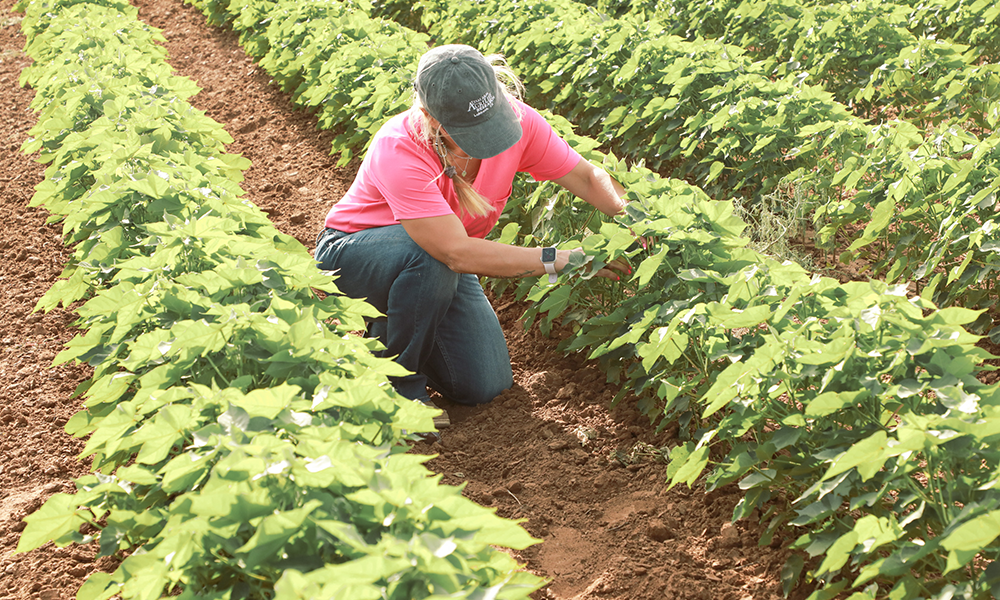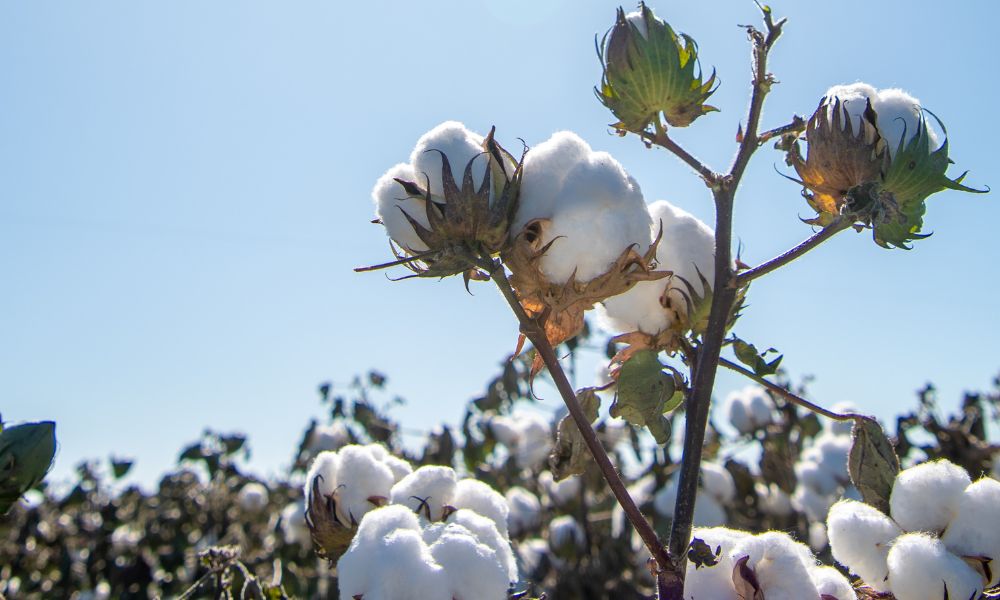Cotton’s Life Cycle and Natural Biodegradability
October 26, 2021
How Cotton's Circularity and End of life are a More Sustainable Solution Than Synthetics
Cotton fiber is naturally circular—it’s grown from soil and can be reused and, where facilities exist, recycled into new apparel and home goods. Ultimately, cotton fiber can be returned to the earth through decomposition under certain conditions. Products made from cotton fibers come with built-in biodegradability both in soil and water, and before they reach end of life, cotton fibers have the durability to last through multiple iterations as clothes, absorbents, insulation, and more.
Textile recycling and employing a secondhand life cycle for fabrics has the potential to reduce fabric waste to 5%, but fiber recyclability plays an important factor. Beginning a garment’s life with 100% cotton fibers can ensure it reaches a sustainable ending, either as a reused or recycled product or one that biodegrades. Whatever your product category, cotton provides opportunities to meet sustainability goals while advancing the circular economy.
Circularity in Cotton’s Life Cycle
Cotton is a natural fiber, grown from the earth as a product of sunlight, water and soil. As a plant-based product, it has a head start on sustainability, and the U.S. cotton industry has set meaningful goals to make it even more sustainable by 2025. When cotton fiber is extracted from the plant, the cottonseeds can go on to make oil or cattle feed, and the other plant matter is used for multiple purposes ranging from fabric dyes to medical supplies.
While apparel manufacturing, production and transport contribute to GHG emissions over cotton’s life cycle, the industry has set goals and developed technologies to minimize its environmental impact. Well-made cotton textiles have years of durability in a consumer closet or in a secondhand life cycle, and 100% cotton textiles can be recycled where recycling facilities exist.
Discover more about every stage of cotton’s life cycle with our interactive Cotton Circularity tool.
The Textile End-of-Life Issue
The average American disposes of 70 pounds of textiles each year, according to the Council for Textile Recycling. Americans donate about 10-12 pounds of this amount to charities, only a small portion of which the charities keep. Charities sell up to 80% of donated clothes to commercial recyclers, at which point the secondhand clothing takes one of four directions:
- Exported: 45% of the secondhand clothing is exported to other countries.
- Repurposed: 30% is reclaimed as wiping rags and industrial absorbents.
- Recycled: 20% of post-consumer fiber gets recycled into lower-grade materials like insulation or carpet padding.
- Wasted: About 5% ends up as waste at the end of the process.
Whether it’s at the end of a secondhand life cycle or as part of the 50-60 pounds of textiles Americans throw away rather than donate each year, wasted fabrics are a problem. Both in landfills and when they’re being laundered, synthetic fabrics shed microfibers into groundwater, rivers, lakes, and oceans and thus contribute to the growing microplastics problem.
Cotton’s Biodegradability in Aquatic Environments and the Soil
Though both natural and synthetic fibers contribute to microfiber pollution, synthetic fibers shed microplastics into waterways that do not break down. Microplastics are so prevalent and long-lasting that scientists project there will be more plastic than fish in the world’s oceans by 2050.
As a naturally occurring fiber, cotton’s end of life is less disruptive—it biodegrades. Research conducted at NC State University in 2018 demonstrates that in a cotton/polyester blend, the cotton degrades 76% after 243 days in wastewater and disintegrates dramatically in fresh and salt water, while only 6% of polyester degrades. That means sustainably sourced cotton degrades 95% more than synthetic fiber. The research also demonstrated that cotton degrades faster than artificial fibers like rayon.

Read more about cotton biodegradability and the research surrounding it on our Biodegradability of Cotton webpage.
Natural fibers like cotton have evolved to return nutrients back to the soil to foster new growth. Biodegradability is part of cotton’s natural life cycle as a plant, and though manufacturing and apparel production slow the process, cotton can still break down and return to the earth under the right conditions.
Synthetic fibers such as polyester weren’t created with end of life in mind, and they biodegrade much slower than cotton. The reason? Even after production, cotton is composed of cellulose, an organic compound that forms cell walls in plants. Polyester is made of PET, the main ingredient in water bottles, and breaks down in soil or water at similar rates as other materials made of this plastic. Research indicates that cotton biodegradability is 99% greater than synthetics in a compost environment — decomposing 89% in 12 weeks versus synthetics’ 0.8%.

Throughout its life cycle, cotton provides a durable and natural alternative to synthetic fibers. It grows as a part of natural plant processes and is becoming continuously more sustainable. It can be reused through several secondhand iterations and recycled into various products. Most importantly, its fibers are naturally occurring and biodegradable, meaning purchasing 100% cotton fabrics can help reduce your contribution to the growing microplastic pollution in our oceans.
The work we do is possible because of collaborations with researchers like these and partnerships with people all throughout the value chain. Ready to commit to sustainably produced cotton? Become a Cotton LEADS℠ partner today. Interested in doing even more? Contact us for ideas to get the most out of sustainable cotton and your partnership with Cotton LEADS.














Recent Comments